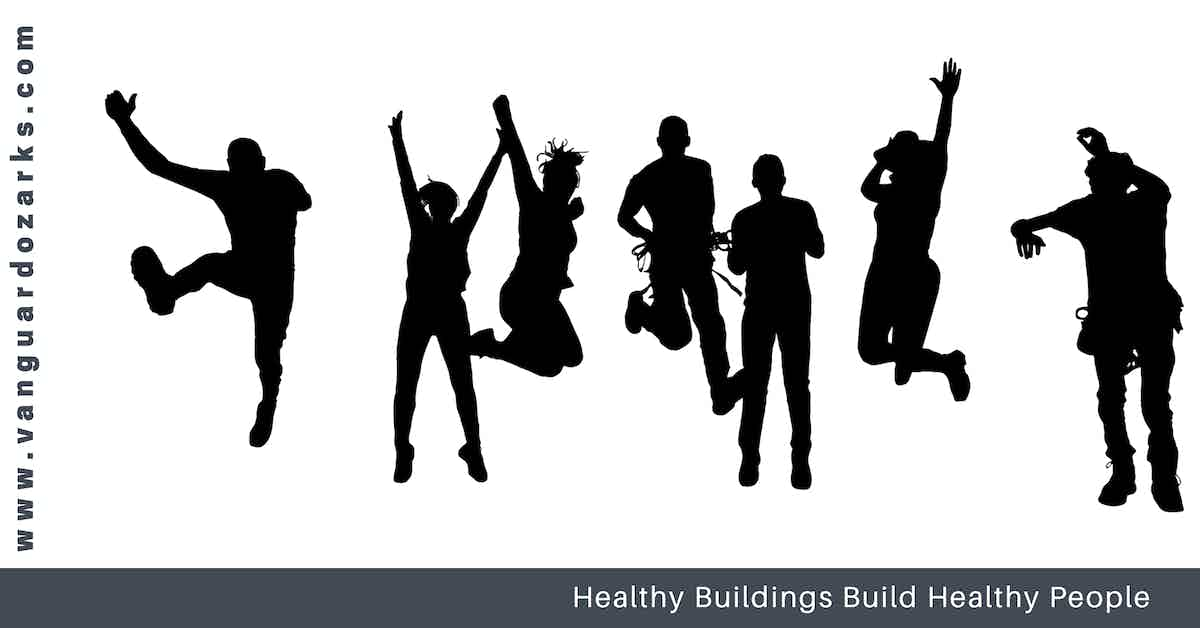Facility hygiene processes and procedures directly impact the natural environment and the quality of the air we breathe, indoors and out.

The Impact of Air Quality
Low-quality air affects an estimated 9 out of 10 people, causing severe respiratory illness and significantly impacting human longevity.
According to the World Health Organization;
New data from WHO shows that 9 out of 10 people breathe air containing high levels of pollutants.
WHO estimates that around 7 million people die every year from exposure to fine particles in polluted air that penetrate deep into the lungs and cardiovascular system, causing diseases including stroke, heart disease, lung cancer, chronic obstructive pulmonary diseases, and respiratory infections, including pneumonia.
Ambient air pollution alone caused some 4.2 million deaths in 2016, while household air pollution from cooking with polluting fuels and technologies caused an estimated 3.8 million deaths in the same period.
9 out of 10 people worldwide breathe polluted air, but more countries are taking action
Over the short-term, varying with exposure duration, pollutant type, and local concentration, poor IAQ results in:
- Dizziness.
- Fatigue.
- Confusion.
- Headaches.
- Nausea.
- Irritation of the eyes, nose, and throat.
- Difficulty breathing.
- Asthma symptoms, and;
- Allergic reactions.
Long-term effects from prolonged exposure can result in:
- Mood changes.
- Respiratory and cardiovascular diseases.
- Neurological disorders.
- Cancer, and;
- Congenital disabilities and developmental problems in pregnant women and young children.
Due to the poor and deteriorating condition of many classrooms, school children are at a heightened risk of harmful long-term IAQ exposure.
Those already who have asthma are at even greater risk.
According to The National Environmental Education Foundation:
[...] children are at a higher risk for developing the negative health effects of indoor air pollution due to the amount of time they spend in school buildings.
The schools present a heightened risk as they often suffer from poor IAQ due to old age and lack of funding to address indoor environmental issues, creating a nationwide challenge.
Children specifically are more susceptible to this risk as their bodies are still developing, and it is physically more difficult for children to process toxins as adults do.
In addition, children are more sensitive to exposures, and they also experience greater exposures: they breathe, eat, and drink more relative to their size than adults do, and they play closer to the ground, exhibit more hand-to-mouth activity, and are less able to identify and protect themselves from potential hazards.
Children with asthma are at an even higher risk for negative health effects, including asthma exacerbation and asthma attacks, due to poor IAQ associated with environmental triggers. However, adults can also be negatively affected by poor IAQ and may even develop adult-onset asthma.
The Potential Impact of Improving Indoor Air Quality
A 1996 study conducted by William Fisk and his colleagues found that improving indoor air quality had the potential to:
- Eliminate respiratory disease for 16 to 37 million people, resulting in a U.S. annual savings on productivity gain of $6B to $14B.
- Reduce allergy and asthma symptoms by 10 to 30 percent, resulting in a yearly savings gain of $2B to $4B, and;
- Reduce sick building syndrome symptoms by 20 to 50 percent for 15 million office workers, resulting in an estimated annual productivity gain of $10B to $30B.
Methods for Improving Indoor Air Quality
IAQ improvement requires a holistic approach that includes:
- Adopting green sustainable cleaning processes and procedures.
- Implementing sustainable purchasing through strategic vendor partnerships.
- Providing ongoing training for service providers.
- Maintaining equipment at high-performance levels.
- Introducing landfill aversion trash management through repurpose, reuse, and recycling programs.
Over the short term, the positive impact will be localized, but in the long term, purchasing and employing sustainably manufactured and transported environmentally-preferable products will improve overall air quality for everyone.
References & Resources
Takeaway
Indoor air quality impacts human health, wealth, performance, and longevity.
Conventional cleaning products and methods release volatile organic compounds that negatively contribute to poor IAQ, resulting in measurably reduced cleaning outcomes and occupant and environmental health.
Eliminating the pollutant source is the most economically sound and efficient solution.
According to the results of a study published by the National Center for Biotechnology Information:
It has now been shown beyond reasonable doubt that poor indoor air quality in buildings can decrease productivity in addition to causing visitors to express dissatisfaction.
The size of the effect on most aspects of office work performance appears to be as high as 6-9%, the higher value being obtained in field validation studies.
It is usually more energy-efficient to eliminate sources of pollution than to increase outdoor air supply rates.
The effects of indoor air quality on performance and productivity
Regarding facility cleaning, pollutant source elimination translates to the adoption of greener cleaning practices exercised by trained and certified service providers.
Onboarding the requisite labor and material resources can prove cost-prohibitive, resulting in low-quality outcomes, including program adoption failure.
Outsourcing is a proven method for onboarding skilled service providers equipped with the latest training, processes, and technologies for a fraction of the price of maintaining a comparable service in-house.
Contact us today and discover why Vanguard Cleaning Systems® is the Standard of Clean® for businesses throughout Northwest Arkansas, Missouri, and Oklahoma.
In Oklahoma, dial 918-960-4450
In Arkansas, dial 479-717-2410
In Missouri, dial 417-812-9777

